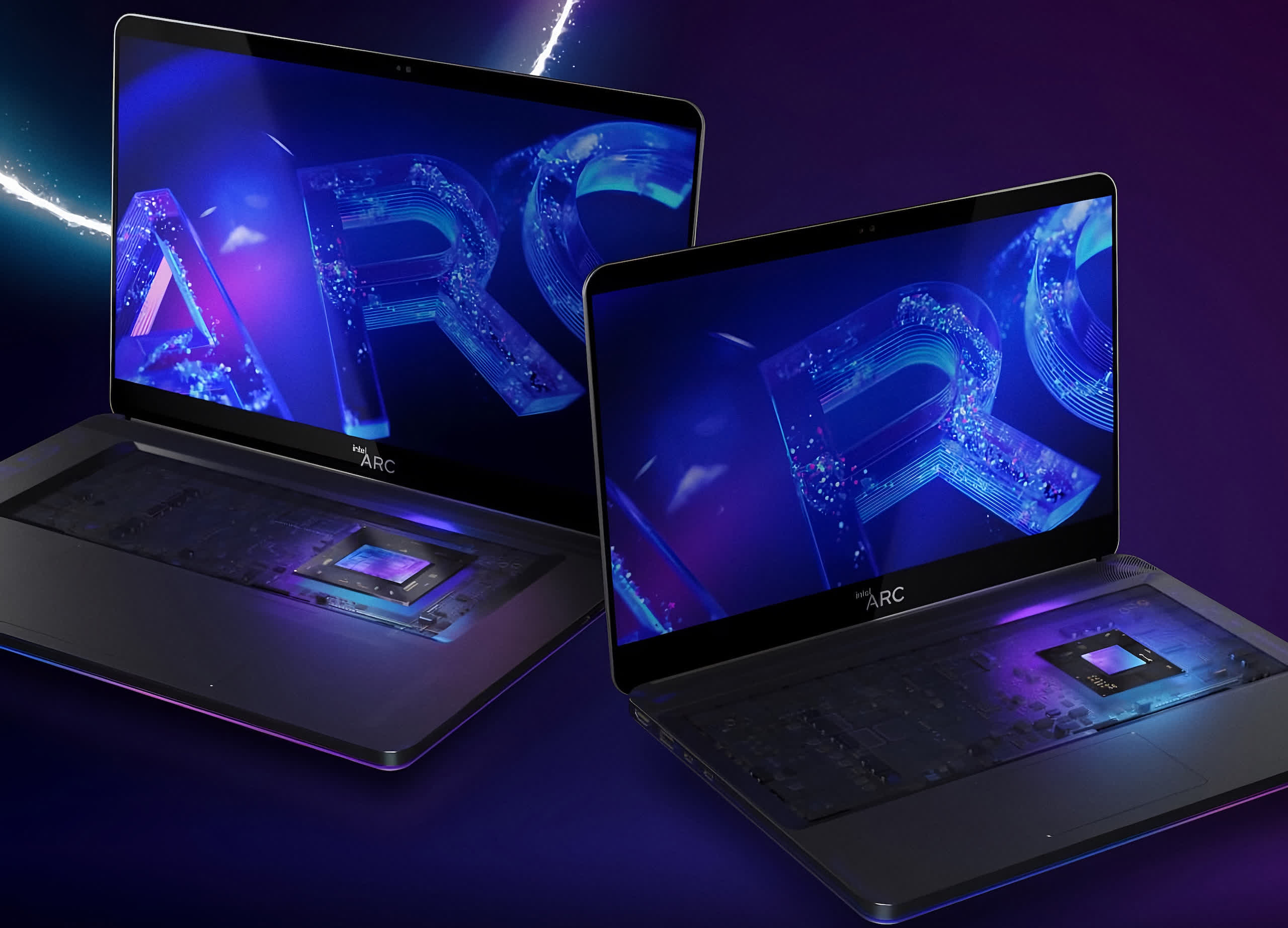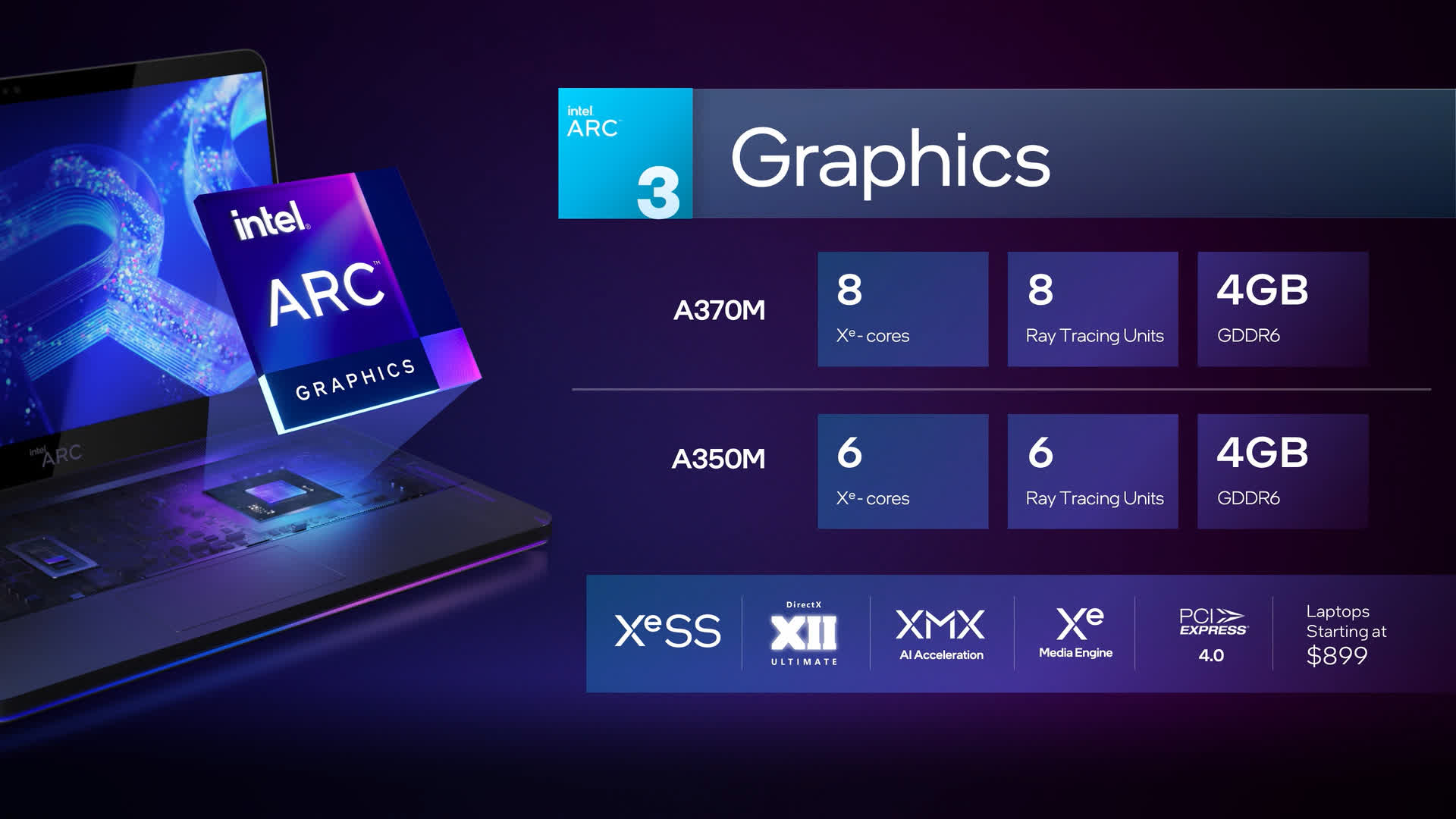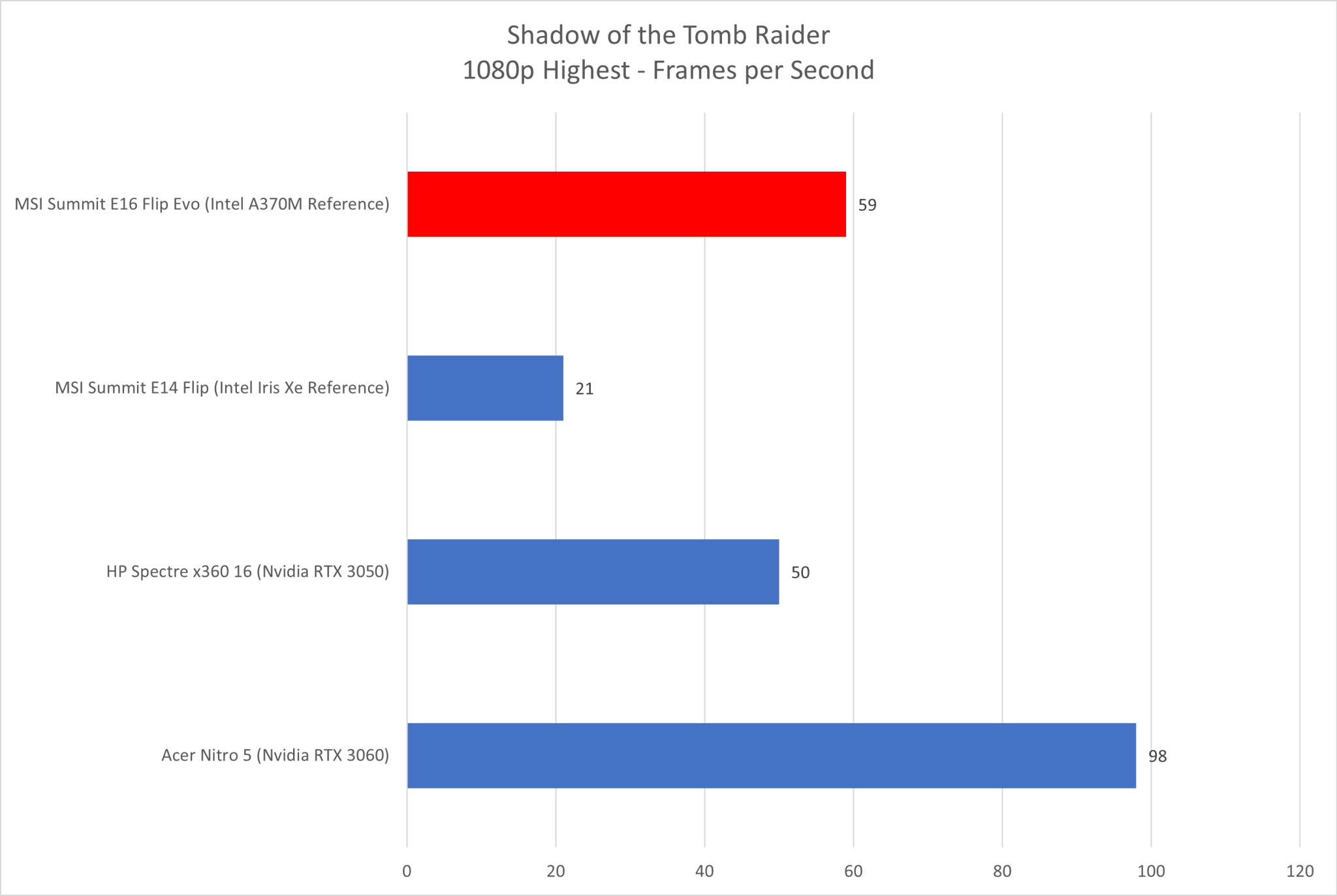Why it matters: Intel's dedicated mobile Arc 3 GPUs are a rare sight, likely because the company believes the software side of things isn't quite ready yet. Team Blue isn't looking to disappoint, according to some new benchmarks performed using the Arc A370M GPU. Things could get a lot more interesting when the Arc 5 and Arc 7 series GPUs hit the market.

Intel introduced its mobile Arc Alchemist GPUs in March, but it has yet to flood the market with millions of them as it promised in January. Raja Koduri, who is SVP of Intel's architecture, graphics, and software (IAGS) division, said Intel was gearing up to solve the graphics card crisis. However, only a couple of its discrete GPUs can be found in a few laptops sold by Samsung in South Korea.
To get an idea of how rare these parts are, PCWorld's Matt Smith visited Intel's Jones Farm campus in Portland, Oregon to get his hands on a reference machine based on MSI's Summit E16 Flip Evo equipped with an Arc A370M GPU. The good news is that he was able to run some benchmarks on it to see if Intel's performance promises hold.

As some of you may recall, AMD last month boasted about the performance of its Radeon RX 6500M laptop GPU and how it compares to Intel's Arc A370M. In short, Team Red's GPU was up to twice as fast across five games at 1080p. Except for Strange Brigade where the performance difference was a more modest 19 frames per second, the RX 6500M was in a different league — at least in a shortlist of likely cherry-picked titles.
Smith first tested the Arc A370M in 3DMark's TimeSpy benchmark, and surprisingly enough it was able to edge Nvidia's RTX 3050 Laptop GPU with a score of 4,405 points. The RTX 3050 Ti is significantly faster with a score of almost 6,000 points, but then again that's a mainstream-tier card with a TGP of 35-80 watts while the Arc A370M is an entry-level GPU with a power envelope of 35-50 watts.

Image credit: PCWorld
The visit to Intel's campus was short, but Smith was also able to fire up a few games such as Final Fantasy XIV: Endwalker, Shadow of the Tomb Raider, and Metro Exodus Enhanced Edition. The Arc A370M GPU was 18 percent faster than the RTX 3050 in Shadow of the Tomb Raider. More importantly, it was three times faster than Intel's own Iris Xe integrated GPU, which was only able to output 21 frames per second at 1080p using the highest graphics preset.
Perhaps unsurprisingly, the Arc A370M isn't quite able to run Metro Exodus Enhanced Edition at 1080p using the high preset, even with the lowest possible ray-tracing setting. Neither is Nvidia's RTX 3050 Laptop GPU for that matter, but at 22 frames per second, it is technically faster than the Arc A370M, which was only able to push 19 frames per second.
Overall, Intel's entry-level Arc graphics solution for laptops showed some rather impressive results. This suggests that Team Blue's Alchemist GPUs could be quite close to Nvidia and AMD's current entry-level and mainstream offerings. The big unknown is whether proper driver support will be ready by the time they land on the market, as things like Dynamic Power Share have been shown to hinder the potential of Team Blue's dedicated GPUs.
https://www.techspot.com/news/94517-intel-arc-a370m-comes-close-nvidia-rtx-3050.html